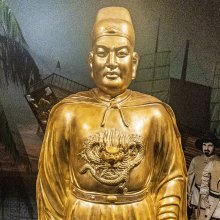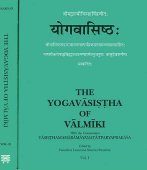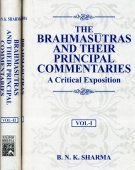Atman, Ātman, Ātma, Atma, Ātmā: 46 definitions
Introduction:
Atman means something in Buddhism, Pali, Hinduism, Sanskrit, Jainism, Prakrit, the history of ancient India, Marathi, Hindi, Tamil. If you want to know the exact meaning, history, etymology or English translation of this term then check out the descriptions on this page. Add your comment or reference to a book if you want to contribute to this summary article.
Images (photo gallery)
In Hinduism
Ayurveda (science of life)
Source: Wisdom Library: Āyurveda and botanyThe Ātman (आत्मन्), or jīva, is the third factor required for the proudction of the foetus, besides the union of the male seed and female blood. It accounts for the individual and mental characteristics. It is carried by the subtle body and manas, under the influence of the law of karman, into contact with a particular embryo. Only when this union is effected, does the embryo start to develop.
Source: gurumukhi.ru: Ayurveda glossary of termsĀtmā (आत्मा):—Soul or spirit: principle of life and sensation , the individual self; the only conscious element in the human body

Āyurveda (आयुर्वेद, ayurveda) is a branch of Indian science dealing with medicine, herbalism, taxology, anatomy, surgery, alchemy and related topics. Traditional practice of Āyurveda in ancient India dates back to at least the first millenium BC. Literature is commonly written in Sanskrit using various poetic metres.
Vedanta (school of philosophy)
Source: archive.org: VivekachudamaniAtman is only another name of Brahman. Whenever we perceive a thing, from any mental impression, it must be the Atman and nothing else that we perceive. Only in our ignorance we fail to grasp the real nature of the thing experienced (the Atman), and call it under various names and forms. So, our egoism, our intellect, and all mental slates are manifestations of the Atman and Atman alone.
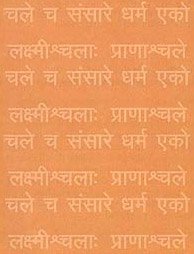
Vedanta (वेदान्त, vedānta) refers to a school of orthodox Hindu philosophy (astika), drawing its subject-matter from the Upanishads. There are a number of sub-schools of Vedanta, however all of them expound on the basic teaching of the ultimate reality (brahman) and liberation (moksha) of the individual soul (atman).
Purana and Itihasa (epic history)
Source: Cologne Digital Sanskrit Dictionaries: The Purana Index1) Ātma (आत्म).—Has no guṇas. Twelve characteristics of.*
- * Bhāgavata-purāṇa I. 18. 50; VII. 1. 7-9; 7. 19-20.
2) Ātmā (आत्मा).—That which is attained, which is taken away and that which is, and hence the ever present bhāva.*
- * Vāyu-purāṇa 5. 34-5.

The Purana (पुराण, purāṇas) refers to Sanskrit literature preserving ancient India’s vast cultural history, including historical legends, religious ceremonies, various arts and sciences. The eighteen mahapuranas total over 400,000 shlokas (metrical couplets) and date to at least several centuries BCE.
Vaisheshika (school of philosophy)
Source: Wikipedia: VaisheshikaĀtman (आत्मन्, “self”) is one of the nine dravyas (‘substances’), according to the Vaiśeṣika-sūtras. These dravyas are considered as a category of padārtha (“metaphysical correlate”). These padārthas represent everything that exists which can be cognized and named. Together with their subdivisions, they attempt to explain the nature of the universe and the existence of living beings.
Source: Shodhganga: A study of Nyāya-vaiśeṣika categories (vaisesika)Ātmā (आत्मा, “self”) refers to one of the nine substances (dravya) according to the Nyāya-Vaiśeṣika school of philosophy (cf. Vaiśeṣikasūtra 1.1.5, Saptapadārthī, Tarkabhāṣā and Bhāṣāpariccheda). The Nyāya-Vaiśeṣikas accept the reality of an eternal self (ātmā) which is not material. Radhakrishnan mentions that “According to the Nyāya, the universe has certain elements which are not corporeal. These are our cognitions, desires, aversions, volitions and feelings of pleasure and pain. All these modes of consciousness are transitory and so are not themselves to be identified with substances. They are viewed as qualities of the substance called the soul”.
Gautama includes ātmā in the list of prameyas, rather it is the first prameya. He describes ātmā as that which causes desire, aversion, volition, pleasure, pain and intelligence in his view. These qualities are the signs or marks of the self. Thus according to Gautama the self is not perceptible; it is inferred by these signs. Kaṇāda also agrees with Gautama and says that ātmā is not perceptible but inferred. Kaṇāda lists eight inferential signs or liṅgas in order to proof the existence of the ātmā. Praśastapāda describes some of the liṅgas enumerated in the Nyāyasūtra as the qualities of the self. He says buddhi (knowledge), sukha (happiness), duḥkha (pain), icchā (desire), dveṣa (aversion), prayatna (volition), dharma (merit), adharma (demerit), saṃskāra (tendency), saṃkhyā (number), parimāṇa (magnitude), pṛthaktva (distinctness), saṃyoga (conjunction) and vibhāga (disjunction). From these it is cleared that Praśastapāda has included both the special qualities and the common qualities here.
Annaṃbhaṭṭa also discusses about the size of the self (ātmā) in his Dīpikā. There are three views prevalent in Indian philosophical surcles. Some philosophers uphold the view that the self is atomic in size. The Jaina says that the self is of medium size that is the size of the body. The Nyāya-Vaiśeṣikas on the other hand says that the self is all-pervasive. Annaṃbhaṭṭa refuse the first view of the atomic size of the self on the ground that the self then will not be able to feel pleasure or pain through the each whole-body. It is also not possible to accept the self as of medium size because in that case the self would be non-eternal and in that case there will be happened kṛtanāśa (destruction of what is down) akṛtābhyāgama (enjoyment of what is not down). Thus at the end the self must be regarded as all-pervasive
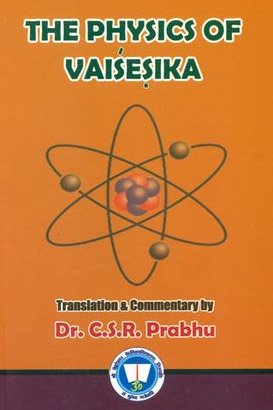
Vaisheshika (वैशेषिक, vaiśeṣika) refers to a school of orthodox Hindu philosophy (astika), drawing its subject-matter from the Upanishads. Vaisheshika deals with subjects such as logic, epistemology, philosophy and expounds concepts similar to Buddhism in nature
Kosha (encyclopedic lexicons)
Source: Google Books: Kalātattvakośa, volume 3Ātman (आत्मन्).—The term ātman is of crucial significance in Indian thought. Basically it denotes the essence of anything that is all-pervading. At the seconday level ātman (self) is also identified with body, mind, intellect, vital force and so on. As such there are the concepts—Supreme Self, individual self. Kalātattvakośa (Vol. I) elucidated the many dimensions of the concept.
The etymology of the word ātman is uncertain. It is variously derived from the roots an-‘to breath’ (cf. prāṇa), at-‘to move’, or vā-‘to blow’.
Kosha (कोश, kośa) refers to Sanskrit lexicons intended to provide additional information regarding technical terms used in religion, philosophy and the various sciences (shastra). The oldest extant thesaurus (kosha) dates to the 4th century AD.
Pancaratra (worship of Nārāyaṇa)
Source: Wisdom Library: PāñcarātraĀtma (आत्म) refers to an aspect of nṛsiṃha (‘man-lion’), according to the Vihagendra-saṃhitā 4.17, which mentions seventy-four forms (inlcuding twenty forms of vyūha). He is also known as Ātmanṛsiṃha or Ātmanarasiṃha. Nṛsiṃha is a Tantric deity and refers to the furious (ugra) incarnation of Viṣṇu.
The 15th-century Vihagendra-saṃhīta is a canonical text of the Pāñcarātra corpus and, in twenty-four chapters, deals primarely with meditation on mantras and sacrificial oblations.

Pancaratra (पाञ्चरात्र, pāñcarātra) represents a tradition of Hinduism where Narayana is revered and worshipped. Closeley related to Vaishnavism, the Pancaratra literature includes various Agamas and tantras incorporating many Vaishnava philosophies.
Yoga (school of philosophy)
Source: archive.org: A History of Indian Philosophy (yoga)Ātman (आत्मन्, “lower self”).—The duality involved in this conception of a friend and a foe, of conqueror and conquered, of an uplifting power and a gravitating spirit, naturally involves a distinction between a higher self (paramātman) and a lower self (ātman). It is only when this higher self conquers the lower that a self is a friend to itself. In a man who has failed to conquer his own passions and self-attachments the self is its own enemy. The implication, however, is that the lower self, though it gravitates towards evil, has yet inherent in it the power of self-elevation.

Yoga is originally considered a branch of Hindu philosophy (astika), but both ancient and modern Yoga combine the physical, mental and spiritual. Yoga teaches various physical techniques also known as āsanas (postures), used for various purposes (eg., meditation, contemplation, relaxation).
Vyakarana (Sanskrit grammar)
Source: Wikisource: A dictionary of Sanskrit grammarĀtman (आत्मन्).—Agent or Kaṛtr as in the terms आत्मनेपद (ātmanepada) or आत्मनेभाषा (ātmanebhāṣā), cf. सुप आत्मनः क्यच् (supa ātmanaḥ kyac) III. 1.8.

Vyakarana (व्याकरण, vyākaraṇa) refers to Sanskrit grammar and represents one of the six additional sciences (vedanga) to be studied along with the Vedas. Vyakarana concerns itself with the rules of Sanskrit grammar and linguistic analysis in order to establish the correct context of words and sentences.
Nyaya (school of philosophy)
Source: Shodhganga: A study of Nyāya-vaiśeṣika categoriesĀtmā (आत्मा, “self”) refers to one of the twelve prameya (“objects of valid knowledge) according to the first chapter of Gautama’s Nyāyasūtra (2nd century CE). Prameya in turn represents the second of the sixteen padārthas (“categories”). Accordingly, regarding ātmā it is said: “desire, aversion, volition, pleasure, pain and intelligence are the qualities of ātmā and abide in it”.
According to the Nyāya-Vaiśeṣika, ātmā is a unique substance because of its guṇas like desire, aversion, volition, pleasure, pain and cognition. Naiyāyikas accepts the existence of the ātmā (self) through anumāna (cf. Gautama’s 2nd-century Nyāyasūtra 1.1.10). Ātmā is the inherent cause of cognitions. It is an object of mental perception.
According to Jayanta Bhaṭṭa, the self (ātmā) is also pratyakṣa. He states that the object of the conception of ‘I’ is perceived as self (cf. Nyāyamanjarī). Radhakrishnan states that “The soul exerts itself to gain or get rid of objects by means of the body, which is the seat of the senses, mind and sentiments. We cannot identify the body with either consciousness or the self which possesses it. Nor can we identify consciousness with the vital processes. Vitality is a name for a particular relation of the self to the body”.

Nyaya (न्याय, nyaya) refers to a school of Hindu philosophy (astika), drawing its subject-matter from the Upanishads. The Nyaya philosophy is known for its theories on logic, methodology and epistemology, however, it is closely related with Vaisheshika in terms of metaphysics.
Vaishnavism (Vaishava dharma)
Source: Pure Bhakti: Bhagavad-gita (4th edition)Ātmā (आत्मा) refers to “(1) Soul (2) Supersoul (3) Intelli-gence (4) Mind (5) Body (6) Senses”. (cf. Glossary page from Śrīmad-Bhagavad-Gītā).
Source: Pure Bhakti: Brhad BhagavatamrtamĀtmā (आत्मा) refers to:—The soul; it may also refer to the body, mind, intellect, or the Supreme Self; it usually refers to the living being. (cf. Glossary page from Śrī Bṛhad-bhāgavatāmṛta).

Vaishnava (वैष्णव, vaiṣṇava) or vaishnavism (vaiṣṇavism) represents a tradition of Hinduism worshipping Vishnu as the supreme Lord. Similar to the Shaktism and Shaivism traditions, Vaishnavism also developed as an individual movement, famous for its exposition of the dashavatara (‘ten avatars of Vishnu’).
General definition (in Hinduism)
Source: Wisdom Library: ĀraṇyakaĀtman (आत्मन्, “self, body”) refers to one of the dravyapañcaka (fivefold substances), defined in the Taittirīya-āraṇyaka 7.7.1. The dravyapañcaka, and other such fivefold divisions, are associated with the elemental aspect (adhibhūta) of the three-fold division of reality (adhibhūta, adhidaiva and adhyātma) which attempts to explain the phenomenal nature of the universe. Adhibhūta denotes all that belongs to the material or elemental creation.
The Taittirīya-āraṇyaka is associated with the Kṛṣṇa-yajurveda and dates from at least the 6th century BCE. It is composed of 10 chapters and discusses vedic rituals and sacrifices (such as the mahāyajña) but also includes the Taittirīya-upaniṣad and the Mahānārāyaṇa-upaniṣad.
Source: Apam Napat: Indian MythologyAtman is the soul. It is believed to be indestructable and immutable. The Advaitha (not-dual) principle (this was propounded by the great philospher Adi-Sankara), states that the Soul is the only one, it is the truth and all else is Mithya (illusion). As per this theory, Moksha (salvation) is attained when illusion is dispelled by self-realization. It states that Karma (deeds) is the basis of the cycle of life and birth. Likes and dislikes spring from attachment. To attain Moksha, it is necessary to be free from Likes and dislikes.
The counter principle Dvaitha states that Atman is separate from the universal spirit that is Brahman. The soul is constantly trying to achieve unity with the universal spirit from whence it sprang. Salvation is attained when this union takes place.
In the Katha Upanishad, which is associated with the "Black" Yajur Veda, Nachiketa asks Yama to explain the nature of Atman (soul). Yama says,
Source: WikiPedia: Hinduism"The soul is devoid of beginning and an end. It is infinite and is devoid of cause and effect. It is free from life and death. It is one, it is flawless. The body is merely a transitory home for the soul. The body ceases to exist at death, but Atman is indestructible."
Ātma (आत्मा): The underlying metaphysical self, sometimes translated as spirit or soul.
In Buddhism
Theravada (major branch of Buddhism)
Source: Dhamma Dana: Pali English GlossaryN (Self inherent entity). That which rests upon itself. Self inherent existence of a thing.
Source: Pali Kanon: Manual of Buddhist Terms and Doctrines'self, ego, personality,
is in Buddhism a mere conventional expression (vohāradesanā), and no designation for anything really existing; s. paramattha-desanā, anattā, puggala, satta, jīva.
Theravāda is a major branch of Buddhism having the the Pali canon (tipitaka) as their canonical literature, which includes the vinaya-pitaka (monastic rules), the sutta-pitaka (Buddhist sermons) and the abhidhamma-pitaka (philosophy and psychology).
Mahayana (major branch of Buddhism)
Source: Wisdom Library: Maha Prajnaparamita SastraĀtman (आत्मन्).—According to Mahāprajñāpāramitāśāstra (chapter XIV).—Ātman is non-existent (anupalabdha); it is only a designation (prajñaptipat). It exists as a result of diverse causes and conditions, but only nominally and conventionally (nāmasaṃketa). Thus when a magician (māyākāra) kills himself, the spectators see him dead, and when a trick resuscitates him, the spectators see him alive; but his life and his death have only nominal existence (prajñaptisat) and are not real (dravyasat).
Source: academia.edu: A Study and Translation of the GaganagañjaparipṛcchāĀtman (आत्मन्) refers to the “self”, according to the Gaganagañjaparipṛcchā: the eighth chapter of the Mahāsaṃnipāta (a collection of Mahāyāna Buddhist Sūtras).—Accordingly, “How, son of good family, does the insight (prajñā) of the Bodhisattva become like empty space? Son of good family, the insight of the Bodhisattva becomes like the expanse of the sky when he is endowed with the four qualities. What are those four? They are, to wit, (1) entering into the purity of all beings through the purity of the expanse of the sky; (2) entering into the purity of all consciousness through the purity of knowledge; (3) entering into the purity of self (ātman), living beings, life principle, and person through the purity of realm; (4) understanding the purity of all letters through the purity of meaning. [...]”.

Mahayana (महायान, mahāyāna) is a major branch of Buddhism focusing on the path of a Bodhisattva (spiritual aspirants/ enlightened beings). Extant literature is vast and primarely composed in the Sanskrit language. There are many sūtras of which some of the earliest are the various Prajñāpāramitā sūtras.
General definition (in Buddhism)
Source: Wisdom Library: Dharma-samgrahaĀtma (आत्म) or Ātmadhāraṇī refers to “the rentention of oneself” and represents the “four retentions” (dhāraṇī) as defined in the Dharma-saṃgraha (section 52). The Dharma-samgraha (Dharmasangraha) is an extensive glossary of Buddhist technical terms in Sanskrit (e.g., ātma). The work is attributed to Nagarjuna who lived around the 2nd century A.D.
Source: Buddhist Door: GlossaryAtma refers to “the individual self” or “the soul” (in Brahmanic thought).
Source: WikiPedia: BuddhismAtman or Atta (Pali) literally means "self", but is sometimes translated as "soul" or "ego". The word derives from the Indo European root *et men (breath) and is cognate with Old English aethm and German atem In Buddhism, the belief in the existence of an unchanging atman is the prime consequence of ignorance, which is itself the cause of all misery and the foundation of samsara. The early scriptures do, however, see an enlightened being as one whose changing, empirical self is highly developed.
Some Mahayana Buddhist sutras and tantras present other Buddhist teachings with positive language by strongly insisting upon the ultimate reality of the atman when it is equated with each beings inborn potential to become and future status as a Buddha (Tathagatagarbha doctrine).
In Jainism
General definition (in Jainism)
Source: Encyclopedia of Jainism: Tattvartha Sutra 2: the Category of the livingĀtma (आत्म).—How many categories of sentients/ soul / jīva / ātma are there? There are two main categories of soul, namely: empirical (saṃsārī) and pure or liberated (mukta). (see Tattvārthasūtra 2.10)
Source: The University of Sydney: A study of the Twelve ReflectionsĀtman (आत्मन्) refers to the “self”, according to the 11th century Jñānārṇava, a treatise on Jain Yoga in roughly 2200 Sanskrit verses composed by Śubhacandra.—Accordingly, “This self itself (ātman—ayam ātmā svayaṃ) is clearly a great ocean of excellent virtues. It is all-knowing, all-pervading, having all forms, supreme [and] pure”.
Synonyms: Jīva, Bhavin.

Jainism is an Indian religion of Dharma whose doctrine revolves around harmlessness (ahimsa) towards every living being. The two major branches (Digambara and Svetambara) of Jainism stimulate self-control (or, shramana, ‘self-reliance’) and spiritual development through a path of peace for the soul to progess to the ultimate goal.
India history and geography
Source: Cologne Digital Sanskrit Dictionaries: Indian Epigraphical GlossaryĀtman.—(IE 7-1-2), ‘one’. Note: ātman is defined in the “Indian epigraphical glossary” as it can be found on ancient inscriptions commonly written in Sanskrit, Prakrit or Dravidian languages.

The history of India traces the identification of countries, villages, towns and other regions of India, as well as mythology, zoology, royal dynasties, rulers, tribes, local festivities and traditions and regional languages. Ancient India enjoyed religious freedom and encourages the path of Dharma, a concept common to Buddhism, Hinduism, and Jainism.
Languages of India and abroad
Marathi-English dictionary
Source: DDSA: The Molesworth Marathi and English DictionaryĀtmā (आत्मा).—m (S) The vivifying principle; the animal soul or life. 2 The soul of the universe, brahma (anima mundi); or the immaterial and immortal spirit of man considered as identical with it. 3 The self, the abstract person or individual. 4 The nature or constitution; the natural temperament or disposition. 5 This word is further used to express--The intellect or understanding; the faculty of reason; wind or air; the body. Note. Countless compounds are formed with ātma after the assumption of क. See क.
Source: DDSA: The Aryabhusan school dictionary, Marathi-EnglishĀtmā (आत्मा).—m The soul; the self; the nature; the intellect.
Marathi is an Indo-European language having over 70 million native speakers people in (predominantly) Maharashtra India. Marathi, like many other Indo-Aryan languages, evolved from early forms of Prakrit, which itself is a subset of Sanskrit, one of the most ancient languages of the world.
Sanskrit dictionary
Source: DDSA: The practical Sanskrit-English dictionaryĀtman (आत्मन्).—m. [at-maniṇ Uṇ 4.152 said to be from an to breathe also] 'आत्मा यत्नो धृतिर्बुद्धिः स्वभावो ब्रह्मवर्ष्म च (ātmā yatno dhṛtirbuddhiḥ svabhāvo brahmavarṣma ca)' इत्यमरः (ityamaraḥ)
1) The soul, the individual soul, the breath, the principle of life and sensation; किमात्मना यो न जितेन्द्रियो भवेत् (kimātmanā yo na jitendriyo bhavet) H.1; आत्मानं रथिनं विद्धि शरीरं रथमेव तु (ātmānaṃ rathinaṃ viddhi śarīraṃ rathameva tu) Kaṭh.3.3. (In ātmā nadī saṃyamapuṇyatīrthā H.4.87 ātman is compared to a river).
2) Self, oneself; in this sense mostly used reflexively for all three persons and in the singular number, masculine gender, whatever be the gender or number of the noun to which it refers; अनया चिन्तयात्मापि मे न प्रतिभाति (anayā cintayātmāpi me na pratibhāti) Ratnāvalī 1; आश्रमदर्श- नेन आत्मानं पुनीमहे (āśramadarśa- nena ātmānaṃ punīmahe) Ś.1; गुप्तं ददृशुरात्मानं सर्वाः स्वप्नेषु वामनैः (guptaṃ dadṛśurātmānaṃ sarvāḥ svapneṣu vāmanaiḥ) R.1.6,4.35,14.57; Kumārasambhava 6.2; देवी (devī)... प्राप्तप्रसवमात्मानं गङ्गादेव्यां विमुञ्चति (prāptaprasavamātmānaṃ gaṅgādevyāṃ vimuñcati) Uttararāmacarita 7.2; गोपायन्ति कुलस्त्रिय आत्मानमात्मना (gopāyanti kulastriya ātmānamātmanā) Mb.; K.17; sometimes used in pl. also; आत्मनः स्तुवन्ति (ātmanaḥ stuvanti) Śiśupālavadha 17.19; Mālatīmādhava (Bombay) 8.
3) Supreme deity and soul of the universe, Supreme Soul, Brahman; तस्माद्वा एतस्मादात्मन आकाशः संभूतः (tasmādvā etasmādātmana ākāśaḥ saṃbhūtaḥ) T. Up.2.1.1; Manusmṛti 1.15,12.24.
4) Essence, nature; काव्यस्यात्मा ध्वनिः (kāvyasyātmā dhvaniḥ) S. D., see आत्मक (ātmaka) below.
5) Character, peculiarity; आत्मा यक्ष्मस्य नश्यति (ātmā yakṣmasya naśyati) Ṛgveda 1. 97.11.
6) The natural temperament or disposition; Bhāgavata 11.22.2.
7) The person or whole body (considered as one and opposed to the separate members of it); स्थितः सर्वोन्नतेनोर्वीं क्रान्त्वा मेरुरिवात्मना (sthitaḥ sarvonnatenorvīṃ krāntvā merurivātmanā) R.1.14; योस्या- त्मनः कारयिता (yosyā- tmanaḥ kārayitā) Manusmṛti 12.12; Kirātārjunīya 9.66.
8) Mind, intellect; मन्दात्मन्, नष्टात्मन्, महात्मन् (mandātman, naṣṭātman, mahātman) &c. अथ रामः प्रसन्नात्मा श्रुत्वा वायु- सुतस्य ह (atha rāmaḥ prasannātmā śrutvā vāyu- sutasya ha) Rām.6.18.1.
9) The understanding; cf. आत्म- संपन्न, आत्मवत् (ātma- saṃpanna, ātmavat) &c.
1) Thinking faculty, the faculty of thought and reason.
11) Spirit, vitality, courage; त्यक्त्वाऽऽत्मानमथाब्रवीत् (tyaktvā''tmānamathābravīt) Mahābhārata (Bombay) 12.18.6.
12) Form, image; आत्मानमाधाय (ātmānamādhāya) Kumārasambhava 3.24 assuming his own form; 2.61; संरोपितेऽप्यात्मनि (saṃropite'pyātmani) Ś.6.24 myself being implanted in her.
13) A son; 'आत्मा वै पुत्रनामासि (ātmā vai putranāmāsi)' इति श्रुतेः । तस्यात्मा शितिकण्ठस्य (iti śruteḥ | tasyātmā śitikaṇṭhasya) Śiśupālavadha 2.61.
14) Care, efforts, pain.
15) The sun.
16) Fire.
17) Wind, air.
18) Mental quality; बाहुश्रुत्यं तपस्त्यागः श्रद्धा यज्ञक्रिया क्षमा । भावशुद्धिर्दया सत्यं संयमश्चात्मसंपदः (bāhuśrutyaṃ tapastyāgaḥ śraddhā yajñakriyā kṣamā | bhāvaśuddhirdayā satyaṃ saṃyamaścātmasaṃpadaḥ) || Mahābhārata (Bombay) 12.167.5. आत्मन् (ātman) is used as the last member of comp. in the sense of 'made or consisting of'; see आत्मक (ātmaka). The form त्मन् (tman) is also found to be used; कृतार्थं मन्यते त्मानं (kṛtārthaṃ manyate tmānaṃ) Mb. [cf. Gr. atmos, aitmen]
Source: Cologne Digital Sanskrit Dictionaries: Edgerton Buddhist Hybrid Sanskrit DictionaryAtma (अत्म).—semi-MIndic for ātmā, self: Lalitavistara 419.8 (verse); see § 3.35.
Source: Cologne Digital Sanskrit Dictionaries: Shabda-Sagara Sanskrit-English DictionaryĀtman (आत्मन्).—m.
(-tmā) 1. The soul. 2. The natural temperament or disposition. 3. Brahm, the supreme deity and soul of the universe, or more usually in this sense paramātmā. 4. Life, spirit, the vivifying soul in opposition to the sentient; commonly also jīvātmā. 5. Body. 6. Care, effort, pains. 7. Firmness. 8. The understanding, the intellect. 9. The mind or faculty of reason. 10. The sun. 11. Fire. 12. Wind, air. 13. A son. 14. The self, the abstract individual. E. āṅ, ata to go, manin Unadi aff.
Source: Cologne Digital Sanskrit Dictionaries: Benfey Sanskrit-English DictionaryĀtma (आत्म).—[-ātma], A substitute for ātman when latter part of compound words, e. g. pratyaya-, adj. Trustworthy, [Rāmāyaṇa] 2, 109, 19.
Source: Cologne Digital Sanskrit Dictionaries: Benfey Sanskrit-English DictionaryĀtman (आत्मन्).—i. e. probably *avā (= vā) + tman (cf. ), m. 1. Breath. 2. The soul. Bhāṣāp. 97. 3. One's own self, [Mānavadharmaśāstra] 4, 254. 4. Self, own; used, but only in the sing., as reflective pronoun of all the three persons, e. g. darśayātmānam, Show thyself, [Nala] 11, 8. gopāyanti kulastriyaḥ ātmānam ātmanā, Virtuous wives protect themselves by means of themselves, [Nala] 18, 8. 5. The instr. sing. compounded with following ordinal numbers denotes one’s self as making up the number, e. g. ātmanā-saptama, Himself as the seventh, i. e. he with six. 6. The body. 7. Intellect, understanding. 8. The soul of the universe, [Vedāntasāra, (in my Chrestomathy.)] in
Ātma (आत्म).—(—°) = ātman.
Source: Cologne Digital Sanskrit Dictionaries: Cappeller Sanskrit-English DictionaryĀtman (आत्मन्).—[masculine] breath, life, spirit, soul; the supreme spirit or all-soul; nature, character; self, one’s self (as refl. [pronoun]). Often °— one’s own; —° = ātmaka. Instr. [with] an ordin. number v. seq.
Source: Cologne Digital Sanskrit Dictionaries: Monier-Williams Sanskrit-English Dictionary1) Ātman (आत्मन्):—m. (variously derived [from] an, to breathe; at, to move; vā, to blow; cf. tman) the breath, [Ṛg-veda]
2) the soul, principle of life and sensation, [Ṛg-veda; Atharva-veda] etc.
3) the individual soul, self, abstract individual e.g. ātman ([Vedic or Veda] [locative case]) dhatte, or karoti, ‘he places in himself’, makes his own, [Taittirīya-saṃhitā v; Śatapatha-brāhmaṇa]; ātmanā akarot, ‘he did it himself’ [Kādambarī]; ātmanā vi-√yuj, ‘to lose one’s life’ [Manu-smṛti vii, 46]; ātman in the sg. is used as reflexive pronoun for all three persons and all three genders e.g. ātmānaṃ sā hanti, ‘she strikes herself’; putram ātmanaḥ spṛṣṭvā nipetatuḥ, ‘they two having touched their son fell down’ [Rāmāyaṇa ii, 64, 28]; see also below sub voce ātmanā
4) essence, nature, character, peculiarity (often ifc. e.g. karmātman, etc.), [Ṛg-veda x, 97, 11, etc.]
5) the person or whole body considered as one and opposed to the separate members of the body, [Vājasaneyi-saṃhitā; Śatapatha-brāhmaṇa]
6) the body, [Raghuvaṃśa i, 14; Rāmatāpanīya-upaniṣad]
7) (ifc.) ‘the understanding, intellect, mind’ See naṣṭātman, mandā
8) the highest personal principle of life, Brahma (cf. paramātman), [Atharva-veda x, 8, 44; Vājasaneyi-saṃhitā xxxii, 11; Śatapatha-brāhmaṇa xiv, etc.]
9) effort, [cf. Lexicographers, esp. such as amarasiṃha, halāyudha, hemacandra, etc.]
10) (= dhṛti) firmness, [cf. Lexicographers, esp. such as amarasiṃha, halāyudha, hemacandra, etc.]
11) the sun, [cf. Lexicographers, esp. such as amarasiṃha, halāyudha, hemacandra, etc.]
12) fire, [cf. Lexicographers, esp. such as amarasiṃha, halāyudha, hemacandra, etc.]
13) a son, [cf. Lexicographers, esp. such as amarasiṃha, halāyudha, hemacandra, etc.];
14) [Old [German] ātum; [Anglo-Saxon] oedhm; [modern] [German] Athem, Odem; [Greek] ἀϋτμήν, (?).]
Source: Cologne Digital Sanskrit Dictionaries: Monier-Williams Sanskrit-English DictionaryĀtma (आत्म):—[from ātman] (in [compound] for ātman; also rarely ifc. e.g. adhy-ātma, adhy-ātmam).
Source: Cologne Digital Sanskrit Dictionaries: Yates Sanskrit-English DictionaryĀtman (आत्मन्):—(tmā) 5. m. The soul; disposition; self; Brahm.
Source: DDSA: Paia-sadda-mahannavo; a comprehensive Prakrit Hindi dictionary (S)Ātman (आत्मन्) in the Sanskrit language is related to the Prakrit words: Appa, Āya.
[Sanskrit to German]
Sanskrit, also spelled संस्कृतम् (saṃskṛtam), is an ancient language of India commonly seen as the grandmother of the Indo-European language family (even English!). Closely allied with Prakrit and Pali, Sanskrit is more exhaustive in both grammar and terms and has the most extensive collection of literature in the world, greatly surpassing its sister-languages Greek and Latin.
Hindi dictionary
Source: DDSA: A practical Hindi-English dictionary1) Ātma (आत्म) [Also spelled aarm]:—(nm) self; (a) pertaining to self, one’s own, personal; ~[kathā] autobiography; ~[kalyāṇa] one’s own good; ~[keṃdrita] self-centred; ~[gata] subjective; inner; ~[gaurava] self-respect; ~[ghāta] suicide; ~[ghātaka/ghātī] suicidal, self-defeating; a self-murderer; ~[carita] an autobiography; ~[caritātmaka] autobiographical; ~[cālita] automatic; ~[ciṃtana] self-contemplation; ~[ja/jāta] a son; ~[jā] a daughter; ~[jñāna] self-realisation, self-knowledge; ~[tattva] the true nature of the soul or Supreme Spirit; ~[tuṣṭa] self-gratified; ~[tuṣṭi] self-satisfaction; ~[tṛpta] fulfilled, gratified, self-satisfied; ~[tṛpti] self-satisfaction; self-fulfilment; -[tyāga] self-sacrifice; self-denial; ~[tyāgī] one who has made sacrifices; ~[dāna] self-sacrifice; ~[dāha] self-immolation; ~[droha] revolt against self; ~[niṃdā] self-condemnation; -[niyaṃtraṇa] self-restraint, self-control; -[nirīkṣaṇa] introspection; -[nirṇaya] self-determination; ~[nirbhara] self-sufficient, self-reliant; •[tā] self-reliance, self-sufficiency; ~[nivedana] offering oneself to a deity; self-communication; ~[niṣṭha] subjective;-[pradarśana] self-display; -[praśaṃsā] self-praise; -[bala] spiritual force, psychic force; -[balidāna] self-sacrifice; ~[bodha] see ~[jñāna; ~bhāva] the self, proper or peculiar nature;-[maṃthana] a deep introspection and analysis of one’s inner self; ~[moha] narcissism; -[rakṣā] self-defence, self-preservation; -[rati] self-love, amour-propre; -[vaṃcanā] self-deception, self-deceit; -[vadha] suicide; ~[vāda] spiritualism; ~[vādī] spiritualist; spiritualistic; -[vijaya] self-conquest; -[vidyā] metaphysics; -[viśvāsa] self-confidence; ~[viśvāsī] self-confident; -[vismṛti] self-oblivion; -[śāsana] self-rule; -[ślāghā/stuti] self-praise; -[saṃtoṣa] self-satisfaction;-[saṃgharṣa] self-conflict: -[saṃyama] self-control, self-possession; -[samarpaṇa] surrender (of oneself); -[sammāna] self-respect, self-regard; -[sammoha] self-delusion; -[sākṣātkāra] self-realisation; ~[sāt] assimilated; •[karanā] to assimilate;-[sādhanā] self-realisation; •[vāda] self-realisationism; ~[siddhi] self-realisation; -[svīkṛti] confession; ~[hatyā/hanana/hiṃsā] suicide, self-killing; -[hita] self-interest.
2) Ātmā (आत्मा):—(nf, also used as nm by Sanskritists) soul, spirit;—[ko duḥkha pahuṃcānā] to make one turn in one’s grave; to cause grief (to); —[ṭhaṃḍī honā] to be gratified; to be fulfilled.
...
Kannada-English dictionary
Source: Alar: Kannada-English corpusĀtma (ಆತ್ಮ):—
1) [noun] that which feels, thinks, desires etc.; the principle of life and sensation; the soul; the ego or the spirit embodied or not; innermost nature; that which one identifies with oneself.
2) [noun] one’s customary frame of mind or natural disposition; nature; temperament, 3) the natural quality or peculiarity or character.
3) [noun] a try; attempt; endeavour; effort.
4) [noun] mental or physical vigour; vitality; spirit.
5) [noun] the thinking, reasoning faculty; seat of intelligence; the mind.
6) [noun] the physical structure of a human being or animal; the body.
7) [noun] the Supreme deity and soul of the universe; the Supreme Soul; Brahma.
8) [noun] air; wind.
9) [noun] the sun.
10) [noun] fire.
11) [noun] (in comp.) reflexively acting upon the agent, automatic.
12) [noun] (fig.) that which makes something what it is; intrinsic, fundamental nature or most important quality (of something); essential being; essence.
13) [noun] ಒಂದೇ ಆತ್ಮ, ಎರಡು ದೇಹ [omde atma, eradu deha] ondē ātma eraḍu dēha a bosom friend; true friends are one soul in two bodies; a friend is another self; ಆತ್ಮ ಕಾದು ಧರ್ಮ [atma kadu dharma] ātma kādu dharma charity begins at home.
Kannada is a Dravidian language (as opposed to the Indo-European language family) mainly spoken in the southwestern region of India.
Tamil dictionary
Source: DDSA: University of Madras: Tamil LexiconĀtmā (ஆத்மா) noun < ātmā.
1. Soul, principle of life and sensation; சீவான்மா. [sivanma.]
2. Living creature, animate or sentient being; பிராணி. [pirani.]
Tamil is an ancient language of India from the Dravidian family spoken by roughly 250 million people mainly in southern India and Sri Lanka.
See also (Relevant definitions)
Starts with (+201): Aatmanirbharta, Aatmanishth, Aatmaniyantran, Atmabandhava, Atmabandhin, Atmabandhini, Atmabandhu, Atmabhava, Atmabheda, Atmabhu, Atmabhuta, Atmabhuya, Atmabhyasa, Atmabodha, Atmacintana, Atmacitta, Atmada, Atmadana, Atmadarsha, Atmadarshana.
Ends with (+305): Abhinnatman, Abhritatman, Abhrityatman, Acintyatman, Adharmatman, Adharmmatman, Adhishthitatman, Adhyatma, Adinatman, Adritatman, Agatman, Ajadatma, Ajitatman, Akamatman, Akarunatman, Akashatman, Akhilatman, Akritatman, Alanghitatman, Amahatman.
Full-text (+1342): Satatya-atma, Anatman, Atmajna, Atmavritti, Atmahatya, Atmagupta, Atmata, Atmashin, Atmahita, Atmambharitva, Atmabhuta, Atmasambhavita, Atmodbhava, Atmavasha, Atmacchandatirtha, Atmasamdeha, Atmakarman, Atmavat, Atmarama, Atmasat.
Relevant text
Search found 237 books and stories containing Atman, Aathmaa, Aatma, Adhma, Adma, Athma, Ātma, Atma, Ātmā, Ātman; (plurals include: Atmans, Aathmaas, Aatmas, Adhmas, Admas, Athmas, Ātmas, Atmas, Ātmās, Ātmans). You can also click to the full overview containing English textual excerpts. Below are direct links for the most relevant articles:
Mahayana Buddhism and Early Advaita Vedanta (Study) (by Asokan N.)
Chapter 2.2 - Structure of the Mula-Madhyamika-karika
Chapter 4.14 - Reality in Advaita (d): Doctrine of Self
Consciousness in Gaudapada’s Mandukya-karika (by V. Sujata Raju)
All Dharmas (entities) are beginningless and unattached < [Chapter 6: A Study of Māṇḍūkya Kārikā: Alātaśānti Prakaraṇa]
The non-originated, non-relational, ever-enlightened Consciousness < [Chapter 6: A Study of Māṇḍūkya Kārikā: Alātaśānti Prakaraṇa]
The unborn Ātman < [Chapter 6: A Study of Māṇḍūkya Kārikā: Alātaśānti Prakaraṇa]
The Shiva Purana (by J. L. Shastri)
Chapter 32 - The description of excellent practice < [Section 7.1 - Vāyavīya-saṃhitā (1)]
Chapter 31 - Instruction in perfect wisdom < [Section 7.1 - Vāyavīya-saṃhitā (1)]
Chapter 13 - The creation of Brahmā and Viṣṇu < [Section 7.1 - Vāyavīya-saṃhitā (1)]
Sutrakritanga (English translation) (by Hermann Jacobi)
Lecture 1: Chapter 1: The Doctrine < [Book 1]
Lecture 16, The Song < [Book 1]
Lecture 1, The Lotus < [Book 2]
Thirty minor Upanishads (by K. Narayanasvami Aiyar)
Adhyatma Upanishad of Shukla-Yajurveda
Tejobindu Upanishad of Krishna-yajurveda, Chapter IV
Chandogya Upanishad (Madhva commentary) (by Srisa Chandra Vasu)
Related products

